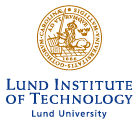Vehicle State Observation
Complex automotive control systems rely heavily on accurate and
reliable information about the state of the vehicle and its
environment. While certain state variables, such as yaw rate, are measured directly,
others, such as the vehicle's side slip angle, cannot be measured due to high sensor costs.
The use of
model based state estimators is therefore necessary to provide
estimates of unmeasured states and achieve sensor fusion when
there are redundant or distributed sensors. In addition, it provides
a mechanism to achieve safe and graceful degradation of performance when
there is temporary or permanent errors in some of the vehicle sensors.
With the vehicle dynamics being nonlinear observability will depend on state and inputs of the system. As a matter of fact external disturbances such as the friction coefficient between tyre and road or the inclination of the road are only conditionally observable, depending on the driving situation.
Nonlinear observers
Recently, there has been
significant progress in the design of nonlinear observers
, which provides an attractive
alternative to the EKF due to such properties as
simplicity of design, reduced computational effort, stability and
separation.
Some of the advantages of nonlinear
observers compared to the EKF are:
- The use of a fixed observer feedback (injection term) avoids
covariance tuning in terms of Riccati equations.
- There are
no covariance estimate equations to update, reducing the number of
ODEs from n + n(n+1)/2 to n, where n is the number of states.
- One benefit of avoiding the covariance estimation equations
is that the recursive algorithm becomes numerically less sensitive
and easier to implement in fixed point arithmetic, which is
essential in automotive embedded control units. \item The state
and covariance resetting problem in EKF can be avoided.
The implementation and experimental validation of nonlinear
observers in mechanical applications such as navigation and ship
control shows that they are more simple and intuitive to tune than
the EKF and leads to reduced commission time, cost, and less
computational and memory requirements.
Beyond these technological advantages, an important point is that
there exist several methods and principles for the proof of uniform
global asymptotical/exponential stability for the non-linear
observer error dynamics, including nonlinear dissipative forces
such as friction and bias models (necessary due to sensor drift),
sensor scale factor and sensor misalignments (mounting). Nonlinear
separation principles and cascaded design techniques for combined
nonlinear control/observer design has been developed and
implemented in some applications. The closed loop is
proven to be uniformly globally asymptotically stable under
similar assumptions as in the linear case.
These theoretical issues are becoming
increasingly important from a practical engineer's point of view
since in complex safety-critical automotive control systems a
theoretical foundation is likely to avoid design errors and reduce
the time used for development and testing. The nonlinear
observer approach provides a computationally less complex solution,
which has advantages both in terms of hardware costs and software
verification.
We conclude that the potential advantages of using nonlinear
observers in automotive applications are significant.
A combination of EKF and nonlinear observers can solve the global convergence problem while maintaining the benefits of tuning and monitoring local performance in a well established way.
|
Vehicle Active Safety
Integrated Chassis Control
Control Design
Vehicle State Observation
|








